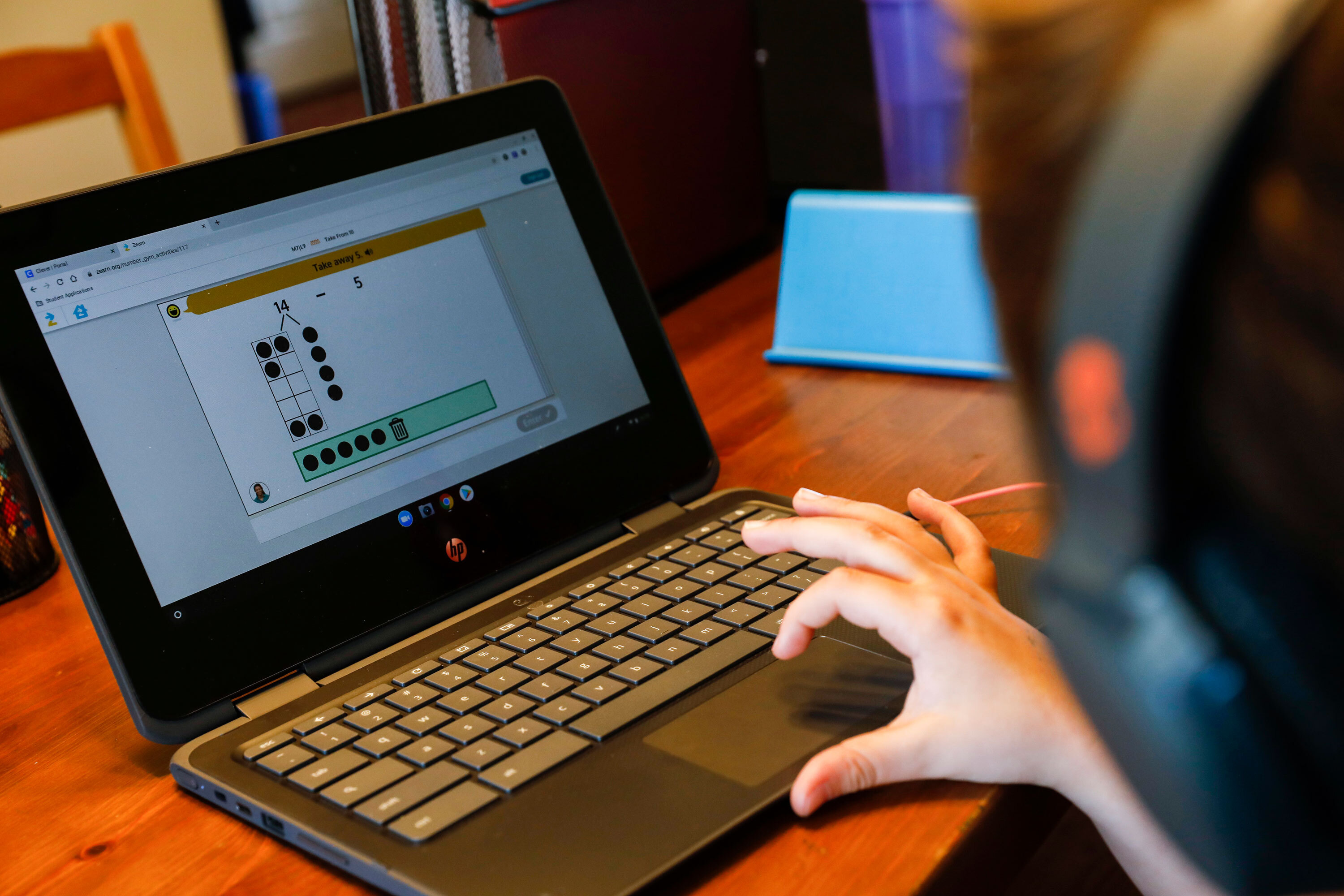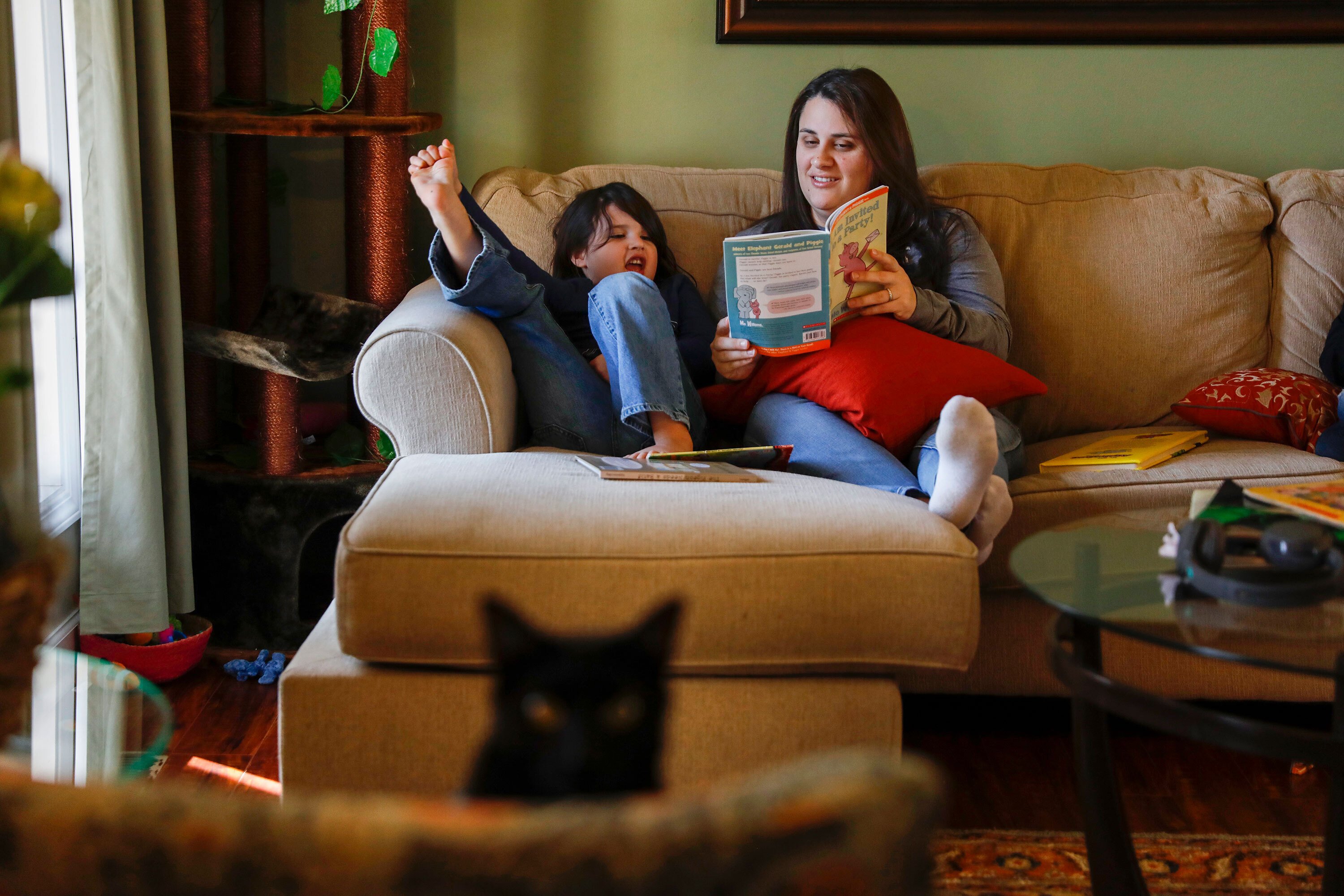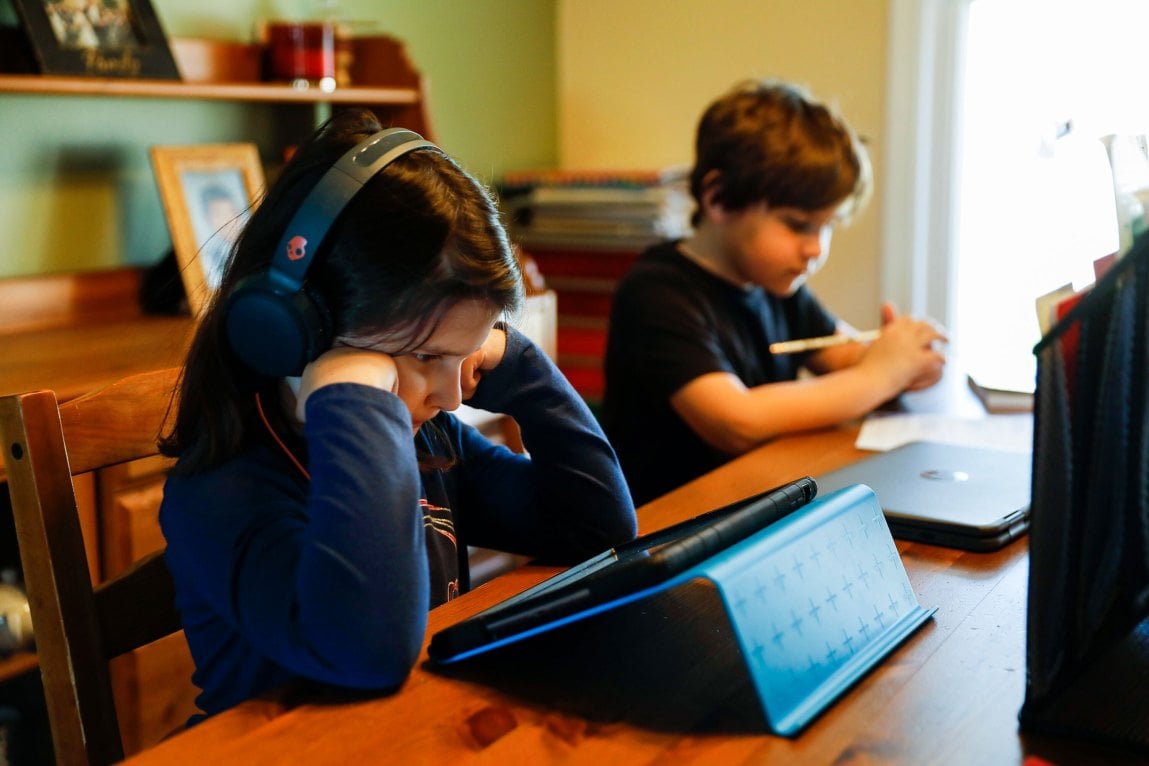Long before the coronavirus crisis shut down Illinois schools, state education officials had encouraged districts to prepare for circumstances when they would have to teach remotely. But most of the state’s 852 school districts didn’t have e-learning plans in place when schools closed in mid-March, a ProPublica Illinois-Chicago Tribune analysis has found.
Many of those districts have found themselves scrambling to figure out how best to teach students when they can’t be face to face. They have had to search for the best online platforms — Google Meet or Zoom or Flipgrid or Seesaw? — and try to determine how many students lacked internet service while districts that had already established the logistics have been able to pivot more easily into actual instruction.
“I do think that we would be facing a much smoother transition to remote learning if districts had spent more time developing the plans sooner, but we could not have predicted our current situation,” said Aaron Mercier, superintendent of the Regional Office of Education that serves Carroll, Jo Daviess and Stephenson counties along the state’s borders with Wisconsin and Iowa. “The results won’t be picture perfect e-learning in every situation, but our schools are committed to making sure that students continue to learn.”
On Friday, Illinois Gov. J.B. Pritzker announced his decision to close all schools for the rest of the school year for the state’s 2 million students. In making the decision, Pritzker said he considered that Illinois has “an educational landscape in which some districts have more experience with remote learning than others,” a challenge that he said “weighed heavily” on the difficult decision to close schools for months.
“Remote learning looks different in each of our communities and that’s encouraged. Some rely on paper and pencil methods more than digital, and vice versa,” Pritzker said.
The Illinois State Board of Education launched a pilot program in 2015 with three school districts to test the feasibility of teaching online during winter weather or other emergencies instead of having to make up the days in person. Based on the results of that program, the General Assembly last year passed a law allowing schools to use up to five e-learning days each school year as long as they created plans that were approved by the regional offices of education.
While the e-learning plans were designed for short-term closures, districts that had developed those plans were in a better position to move to the ISBE-mandated remote learning at the end of March. For some districts, it meant students had already practiced how to use the online platforms. And districts surveyed families to determine which students needed a laptop or other device and who needed a mobile hot spot to access the internet.
Read More
ProPublica Illinois and the Tribune surveyed the state’s 38 regional offices of education to determine how many districts had e-learning plans approved before the pandemic forced buildings to close. Information was provided for about 670 of Illinois’ 852 public school districts and special education cooperatives; roughly one in four, or about 200, had plans approved before March 17, the first day the governor shut schools. Of those, dozens submitted plans in the days leading up to the closures.
Gurnee School District 56, in Chicago’s north suburbs, participated in the pilot program and practiced e-learning as if it were a fire drill: Teachers suddenly announced to their classes that it was time for e-learning, and students had to stop what they were doing, log in to their laptops or iPads and show they knew how to access their work.
“There’s a huge learning curve” for both students and their teachers, said Colleen Pacatte, superintendent of the 2,000-student district. The practice sessions allowed the district to make adjustments in its system well before the pandemic hit, switching from one set of online tools that didn’t work to others that did and making video tutorials to parents so they could understand how to use the technology and help their children at home.
“I empathize so much with the districts that are just trying to figure it out or districts running stuff off and delivering it,” Pacatte said.
These e-learning plans are different from the “remote learning” plans that the state required school districts to develop in late March. Remote learning plans can include both online and traditional work. The plans detail the hours teachers are available each day, how parents should submit attendance records for their children, what will be taught, how students can access learning materials and how school employees will communicate with families.
ISBE directed schools to begin remote learning on March 31, allowing them up to five planning days before instruction began. Chicago Public Schools began remote learning last week, following five planning days and then a weeklong spring break. The district did not have an e-learning plan in place prior to the state shutdown.
Many districts that didn’t have e-learning plans already approved have quickly created them.
That includes some large districts in Naperville, Palatine, Schaumburg and Joliet — all of which finalized e-learning plans in March. Among the districts served through the regional education office in north Cook County, only Evanston District 202 had an e-learning plan in place before the COVID-19 pandemic.
In the south suburban Will County region, five of the 33 school districts had approved e-learning plans before the state shutdown. While the adjustment has been difficult for teachers and students everywhere, districts that had already done some planning had the “basement of the house built” and didn’t need to start digging the foundation, said Will County regional superintendent Shawn Walsh.
Regions of the state with greater internet accessibility — measured by rates of broadband access per 1,000 households — were more likely to have e-learning plans in place, the Tribune-ProPublica Illinois analysis found. All 49 districts and public programs served by the north suburban Lake County Regional Office of Education had plans before March 17, though only 13 submitted the plans earlier in the school year. Most of the school districts in Grundy and Kendall counties as well as the education region that serves Jersey, Macoupin, Calhoun and Greene counties along the Missouri border had plans, too.
“If you had a plan in place already, it would have made things easier. I was just talking to one of my superintendents a few minutes ago, and he feels the first week or so was a challenge and when they got things ironed out in this situation that things have run smoother,” Ron Daniels, a regional superintendent who oversees 45 school districts near St. Louis, said in an interview last week.
Read More
Before schools closed, only two of Daniels’ schools had e-learning plans — a parochial school and a small elementary school. Many schools decided not to participate because their rural communities had no internet access, or it was unreliable. They would have preferred to make up lost days in person if there were emergency closures, though they couldn’t have anticipated a months-long shutdown, he said.
The St. Rose School District in his region submitted an e-learning plan on March 25 for “March 31 – ?????” The plan requires the district’s 200 students, from kindergarten to eighth grade, to join their class through Google Meet every morning, when attendance is taken. Teachers upload to Google Drive “on the go learning packets” for each grade. Fourth graders get reading passages and math problems. Seventh-grade geography features daily reading passages on different parts of the world. On the 10th day of remote learning, students were assigned to read about the Berlin Wall.
The shift to e-learning was an adjustment for school districts near Carlinville in central Illinois, none of which had e-learning plans in place before the COVID-19 shutdown.
“This wasn’t something on our radar,” said Michelle Mueller, a regional superintendent who oversees 14 school districts across four counties. Most of them do not have a laptop or other device for each student, making remote learning a challenge. “Nobody in my area had the forethought where they had (plans) in place to use for inclement weather days. … It has really been a culture shock for my teachers.”
Maercker District 60, which has 1,300 students across three schools in DuPage County, developed an e-learning plan last school year, after the state legislature allowed it, and then practiced it on a Friday a year ago. Teachers tested different techniques and parents provided feedback.

“We had a great response and, because of it, we decided we would roll it out anytime school needed to be canceled this year,” said Maercker superintendent Sean Nugent.
Even before the onset of the COVID-19 outbreak, teachers were meeting at the start of each month to design interactive distance-learning experiences in case of an unexpected school closure.
“Our people were spending all of this year thinking through how might this work digitally versus having to do it in (a few) days, on the fly,” Nugent said.
The district’s online learning plan includes links to a Google form for elementary school parents to “check their child in” to school each day. There are YouTube videos of math lessons and daily assignments, and enrichment activities, including e-books, are catalogued in Google Drive. Teachers are available from 8:30 a.m. to 1:30 p.m. every day for live text chats and impromptu Zoom and phone calls.
In the remote learning guidance that ISBE issued at the end of March, the agency encouraged districts to focus first on students’ immediate needs to be physically and emotionally safe, and then deliver education. “Simplicity is best,” the 62-page guidance document said, acknowledging that remote learning doesn’t always mean learning with technology.
“Given the reality of the digital divide, most schools may need to provide digital and nondigital access to content,” the document said, asking districts to offer students flexibility “that avoids penalizing students for their choice.”
Whether remote learning occurs online or with pencil and paper, schools should provide enough work for students to keep a regular daily schedule, the guidelines state. For kindergartners, that should amount to between 30 and 90 minutes per day; for high school students, between two and 4.5 hours. Multilingual and early-childhood students and students with disabilities also must have appropriate remote learning opportunities.
Grades can be issued, but only if they don’t negatively affect a student’s academic standing. Missed or poor work can be redone or made up later, ISBE said.
ISBE surveyed school districts last month to assess how they planned to implement remote learning. Of the 655 that responded, about 9% said they were using only digital learning. An equal percentage said they were sticking to nondigital options. The majority of districts — about 82% — said they were blending online and paper-and-pencil instruction.

More than 425 had students log into online learning websites like Khan Academy and more than 430 said they met face to face with students via FaceTime, Google Hangouts or other video chat services.
Some 230 districts reported to ISBE that they’d been delivering class materials to students at home by running school-bus routes or other home delivery.
In Gurnee, e-learning packets — basic information about how to go to class online — were handed out in plastic bags during school orientation last year, said Angenetta Frison, whose 4-year-old daughter, Taylor Hill, is in pre-kindergarten. Frison said she got the packet, set it aside and didn’t think of it again until the coronavirus hit.
“It’s well put together,” Frison said, from the instructions to the planned online meetups so the students can see one another. “Everything has been seamless. … All the parents I’ve spoken to echo that we’re glad we are in a district that was prepared.”
Pacatte, the Gurnee superintendent, said she’s tweaked the district’s e-learning plan for a longer-term shutdown. Now, she requires all classrooms to meet virtually at least once a week to help maintain relationships, which wouldn’t have been necessary during a snow day. Because the district didn’t need the five planning days, teachers are using consecutive Wednesdays for team meetings to assess the plans and make changes.
Pacatte said she fielded calls from other superintendents asking for advice, and last month she was a panelist on several webinars to help other Illinois school officials catch up.
For one of them, 900 people logged in to listen.




















